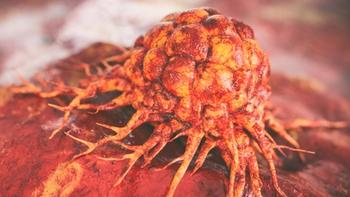
Oncology NEWS International
- Oncology NEWS International Vol 5 No 9
- Volume 5
- Issue 9
Gene Mutation Provides Resistance to HIV Infection
NEW YORK--Scientists at the Aaron Diamond AIDS Research Center appear to have solved one of the long-standing enigmas of HIV infection--why some people remain uninfected even after repeated exposures to the virus. The answer lies in the genes, and in basic research published only a few months earlier.
NEW YORK--Scientists at the Aaron Diamond AIDS Research Centerappear to have solved one of the long-standing enigmas of HIVinfection--why some people remain uninfected even after repeatedexposures to the virus. The answer lies in the genes, and in basicresearch published only a few months earlier.
Studies of two homosexual men who have avoided infection sincethe start of the AIDS epidemic, despite having HIV-positive partners,uncovered a genetic mutation that appears to protect against infectionwith the virus. Both men were found to have two mutant copiesof the CCR5 gene (also known as CKR-5, or chemokine receptor-5),whose discovery was reported by five different groups in Junein a flurry of papers in Nature, Science, and Cell.
The CCR5 gene produces a protein receptor that allows HIV entryinto human immune cells. The two men with the mutant gene didnot have the receptor, Dr. Nathan R. Landau and his colleaguesreported in the journal Cell (August 9, 1996).
Other work suggests that as many as 1% of whites of Western Europeandescent may have the gene mutation, and up to 20% of whites mayhave one copy of the defective gene. Even one copy may have aprotective role, either in lowering the risk of infection or indelaying progression of HIV after infection.
Articles in this issue
over 29 years ago
Multimodality Approaches Used in Esophageal Cancerover 29 years ago
Talking With Your Doctor About Cancer and Its Therapyover 29 years ago
Guttman Institute Reopens With Expanded Screening Servicesover 29 years ago
Weight Gain, Not Fat Intake, Increases Breast Cancer Riskover 29 years ago
Knowing When to Bow Out Gracefullyover 29 years ago
Chemo Appears Not To Raise Birth Defect Risk in Offspringover 29 years ago
Discovery of HIV-1 Protein Structure Could Lead to New Therapiesover 29 years ago
'Friends of Cancer Research' Will Lead New Public Education Campaignover 29 years ago
Cost of the New HIV Therapies Creates a Doctor's DilemmaNewsletter
Stay up to date on recent advances in the multidisciplinary approach to cancer.
















































































